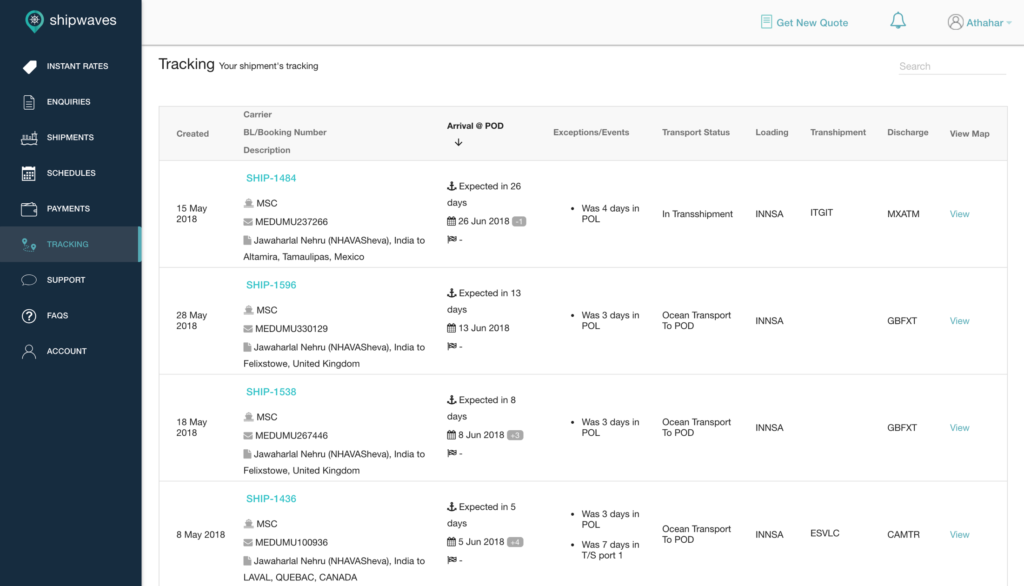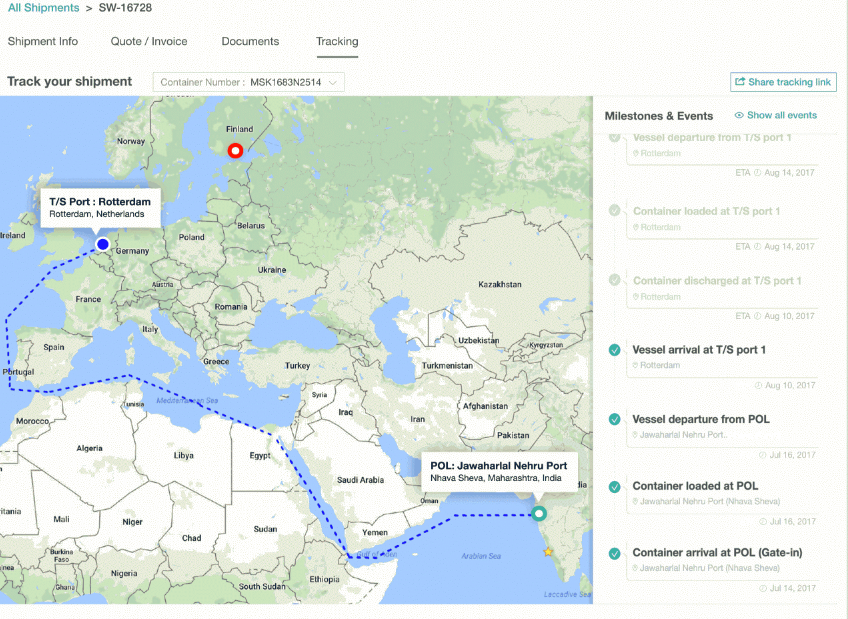Mr. Harris Kalandan, Chairman and Managing Director of Shipwaves and Mr. Abid Ali, Chief Financial Officer of Shipwaves talks about the predictive supply chain solution
Visit the news page on Google and type in “logistics analytics” and you will see a dozen articles from news outlets around the world that have been posted just within the last few hours. You’ll see announcements of startups launching, offering a new iteration on data analytics services, retailers signing with SaaS companies, and prominent industry leaders announcing their own endeavors — and that’s just within the world of logistics. Businesses across the regions and industries are digitising in the name of Big Data because of its perceived value.
Data isn’t valuable because it is rare or difficult to come by. In the digital age, it has become somewhat of a ubiquitous commodity. There is such an abundance of it there is even a term for data about data (metadata.)
While many can harness data, few are able to analyze it, which is the key to accessing the value of data that is so often talked about. That’s where “analytics” comes into play. In the following article, we will discuss what we mean when we say “data analytics” and the true implications in terms of different logistics sectors’ ROIs and bottom lines.

Data analytics
When we talk about data analytics, we are usually referring to its applications in business-to-consumer (B2C) context. Organizations of all kinds can collect and analyze data associated with consumers, business processes, and markets, and then categorize and store it in order to derive insight into future purchasing trends and industry patterns.
Websites and social networking platforms like Google, Instagram, Facebook, and Twitter all collect their own data on user demographics like age and gender. With this data, the companies are able to make connections and predict trends — a capitalist’s dream come true. Specific to the logistics industry, data prominently refers to a shipment, like booking number, the point of origin, live location, expected arrival, etc. These data are all available in Shipwaves platform for users to track at any time.
The value of data analytics in the industry cannot be over-dramatized. Why? Think of the application of data analytics as a crystal ball for consumer demand and industry trends. The more data in your possession, the better you can understand your target market and forecast trends. The end result being a more accurate crystal ball.

Improving facilities’ efficiency
Data analytics play a critical role in improving a logistics company’s inventory management. This specific realm of operations can be one of the more complex equations in terms of optimization because of the costs associated with inventory and the parameters at play. Here, maximizing profit means minimizing the amount of time that inventory is in your possession, but at the same time, utilizing your facilities to the highest degree possible.
For example, if you are a logistics company with x square feet of warehouse capacity, your goal is to make sure that you are constantly using as close to “x” square feet of space any given day to ensure you’re getting the most “bang for your buck” for the “y” dollars that you sink to rent or own that space per month. Idle space is wasted money.
On the other end of the seesaw, you need to be aiming to minimize the amount of time that inventory spends in your warehouse. Why? Because the more time a specific shipment spends sitting, the more money you are spending on inventory costs per shipment. Say you were to set the supply chain back one extra week by telling your buyer that the shipment will arrive on Jan. 15 instead of Jan. 8. You no longer have to worry about sending the shipment late, but instead, you’ll have to pay for an extra week of storage costs for that inventory. So again, you lose out. In the end, this move detracts from your ROI.
Data analytics can be used to help you determine a much narrower window of time to allocate for depending on the products, vendors, and shipments, so you won’t have to allocate more warehouse time than necessary, reducing excess inventory costs and maximizing your bottom line.
Improving project management and risk management
Project management is another realm that analytics are directly applicable. It is a discipline that is sometimes mistaken as easily handled on an amateur level, however, good project management is a science in itself, built on a foundation of data.
Similar to inventory management, time is often an indefinite factor in project management. While there is no real “crystal ball” with 100% accuracy in project management, the degree of accuracy that analytics can boost your business’ efficiency by a surprising degree.
Project management software, or even manual project management in Excel, utilize your company’s data by applying probability concepts that you may have learned about in your Statistics 101 class. For instance, based on historical, seasonal and product data, a project manager or project management software can determine with a percentage accuracy that an event will occur within a certain range of hours or days. The key is correctly utilizing your data.
Having this degree of certainty enables you to tighten the timeline of your projects and make decisions with more confidence at every level, pleasing stakeholders, reducing costs that crop up along the way due to poor planning, and maximizing ROI.
Improving ground operations
Shipwaves’ services cover the supply chain from end-to-end. The mid- to the final-mile section of the supply chain is as important as the long haul sections of routes and are often the most complex to coordinate for logistics companies. Tightening up this area of the supply chain is crucial to staying on schedule, and the best way to accomplish this is by utilizing a TMS, which is simply a software platform for managing transportation data, like Shipwaves. A study from the ARC Advisory Group, which conducts an annual analysis of the use of global transportation management systems (TMS) market shows that ROI gained from implementing a transportation management systems (TMS) is the most prominent accelerant of the sector’s growth.
Trucking is a uniquely well-suited candidate for analytics because of the plethora of data provided by electronic logging devices (ELDs) — the devices that capture information on whether the engine is running, if the vehicle is moving, the length of the engine operation and miles driven that have been federally mandated in the U.S. While some industry members have encountered obstacles in implementing ELDs, in the long run, it is a valuable new source of data and an opportunity to improve efficiency.

By utilizing the data collected from ELDs and employing TMS software, companies can employ analytics to forecast demand, maximize capacity, and ultimately reduce freight spend. Based on the survey results, respondents that use TMS save an extra 6 percent on associated costs. These freight savings can be attributed to lower cost mode selections, better routing, and better procurement negotiations.
Shipwaves Online
Shipwaves provides Supply Chain Visibility like the insight detailed above, giving shippers effortless visibility across every shipment and all major shipping lines. In Shipwaves’ dashboard, customers can see details like exceptions that have occurred in the journey (rollovers, delays in POL, trans-shipment, etc.) and alert subscribers in real time for any critical exceptions, so that your company’s logistics and procurement teams can take preemptive action before a supply chain disruption occurs.
We also provide carrier performance insights, so our customers can plan their shipments based on historical lead times and carrier performance, and compare their carriers at global, trade lane and port pair level. Many of Shipwaves’ customers have utilized this data to drive contract negotiations and future allocation decisions.
Data analytics is a complex topic, but it doesn’t have to be daunting. To learn more about how Shipwaves can improve your company’s operations and boost your ROI, contact the Shipwaves team.
